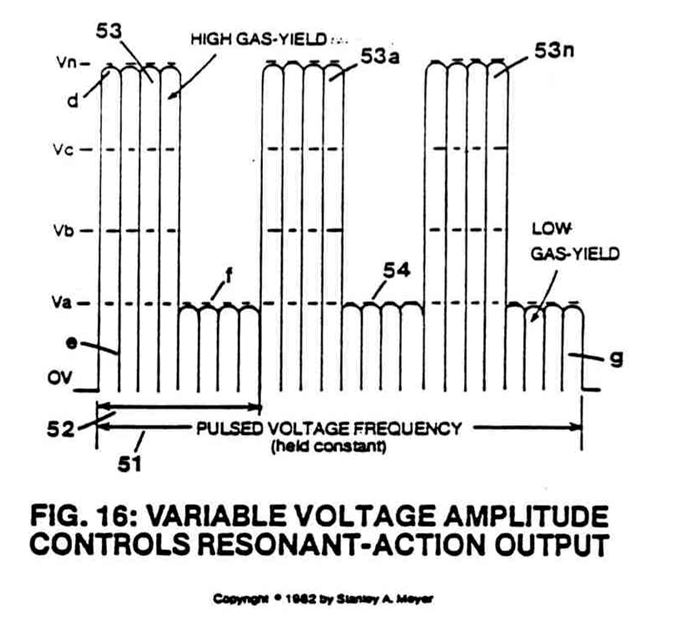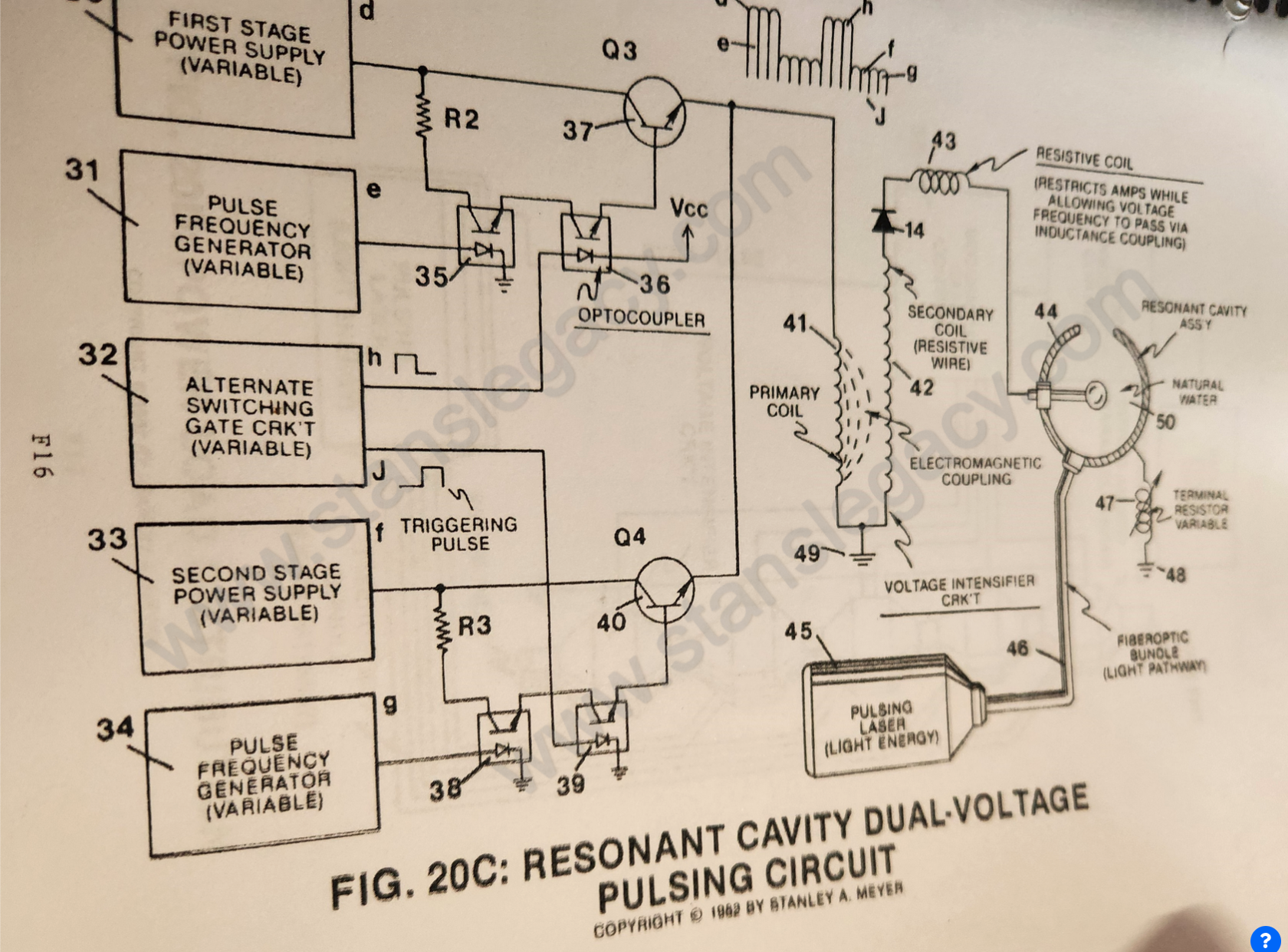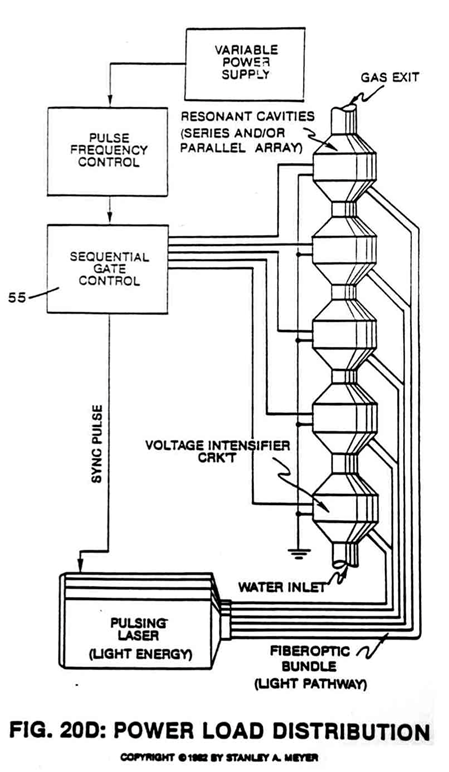Operational Comments
To start said compounding-action (resonant action) simply attenuate said voltage pulses while increasing said voltage amplitude.
Once resonant-action is established and said pulsing circuits adjusted for minimum amp flow, simply adjust said voltage amplitude controls to vary gas production and trigger gas ionization by way of particle collision
(see Exhibit BX, Encyclopedia of Chemistry, [Hampel/Hawley], Third Edition, Page 585).
O) Laser Injected Resonant Cavity:
PURPOSE: To enhance hydrogen gas-yield beyond said voltage parameters and said compounding-action (resonant-action) prior to gas ignition. And to help cause said liberated gas atoms to reach said state of gas ionization.
Circuit Stage: (45) (46) as to (44) in reference to said high intensity voltage pulse (53) (54) of Figure (16).
Laser or light energy (45) of Figure 20C and Figure 20D is now injected into said high intensity voltage zones to help cause said liberated gas atoms (remember ambient air gases are also being released from said water) to reach said gas ionization state.
Said ionized gases enter into other resonant cavities (see Figure 20D as to Figure 20C again) in stacked relationship (exit port to inlet port) undergoing the same gas ionization process.
Ionized gas build-up per cavity-stage causes greater gas-yield to occur prior to gas-ignition or utilization.
Said laser or light energy is pulsed to maintain said compounding action within said resonant cavities.
 The absorbed electromagnetic energy (light-energy) (45) by said atoms forming said water molecule also helps disrupt electrical mass equilibrium of said water molecule atoms when said water molecule atoms are subjected to said high-intensity voltage pulse (53) (54) of Figure (16). (See Exhibit BX again).
The absorbed electromagnetic energy (light-energy) (45) by said atoms forming said water molecule also helps disrupt electrical mass equilibrium of said water molecule atoms when said water molecule atoms are subjected to said high-intensity voltage pulse (53) (54) of Figure (16). (See Exhibit BX again).
Laser assembly (45) can be any type of conventional laser that operates in the visible and/or ultraviolet region.
In application, semiconductor lasers are used in packaged form to transmit said generated laser or light energy to said resonant cavity.
Said semiconductor laser package is variable pulsed from 1Hz to 1KHz or higher to help trigger gas ionization during said resonant-action process.


